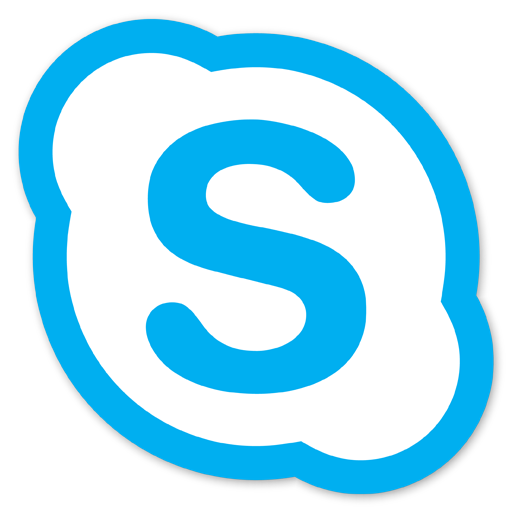Skype for Business for Android App Instantly

Info and Review for Skype for Business for Android App
Business Rate: Star Rating:
Skype for Business for Android a friendly,human guide
Skype for Business for Android yes, that exact phrase appears at the top because search engines like an obedient chant and because it’s the subject of this long, conversational exploration.
If you ever carried meetings in your pocket cursed at flaky Wi-Fi,
or felt philosophical after a 3 person call turned into a 90-minute strategy session, you’re in the right place.
This piece is informal mildly philosophical sometimes funny on purpose,
and organized so you can skip to the bits you actually need.
Quick map: what you’ll find in this article
- What Skype for Business for Android actually is and what it used to do
- Core features that matter on mobile
- Real-world tips (battery, bandwidth, meetings)
- Migration context why Teams matters and what retired means
- How to decide whether to keep using it (and for whom it still makes sense)
- A playful, philosophical wrap-up
What is (or was) Skype for Business for Android?
Skype for Business for Android is the mobile client that brought presence, instant messaging (IM) voice,
and video calling from a workplace grade Skype Lync backend to your Android phone or tablet.
It was built to connect corporate directories calendar aware meetings,
and enterprise telephony into a single mobile app experience the take your office on the bus idea.
The app had official distribution channels (Microsoft download pages and the Google Play Store).
Core features that make mobile sense
Think less cute stickers and more presence calendar and a call that doesn’t die when you lock the phone.”
- Presence see who’s available, busy, or in a meeting at a glance; it syncs with your corporate calendar.
- Instant Messaging enterprise IM with conversation history and sometimes federation to other Skype/Skype for Business users.
- Audio and Video Calls one-tap join for scheduled meetings or ad-hoc calls; it supports both one-to-one and group calls.
- Meetings & Calendar Integration upcoming meetings surface inside the app with join controls so you don’t have to juggle emails and awkward links.
- VoIP & PSTN Options (where provisioned) in some enterprise setups you could make receive PSTN calls through your business number if the admin enabled it.
These features were central to the app’s purpose:
keep business conversations synchronous and context aware even when you’re off your desk.
For a more formal feature listing and comparison with other mobile clients,
Microsoft’s documentation and product pages provide the official breakdown.
Installation & availability where to get it
Historically the official distribution paths were Microsoft’s download pages and the Google Play Store If you want the official client,
those are the places to start assuming your organization still supports it.
The Play Store listing persisted for a long time as the mobile channel.
Practical tips getting better calls on Android
Short, actionable tips because long manifestos are great in philosophy class but not when you’re trying to stop a call from dropping.
- Use Wi-Fi for video whenever possible. Mobile data can be flaky and expensive; Wi-Fi usually gives you more stable bandwidth and saves battery.
- Close background apps that use audio. Media players or other VoIP apps can steal the audio device and create echo or dropouts.
- Turn off HD video for long calls. If a meeting has many participants, audio is usually the most important channel video is a luxury that eats CPU and battery.
- Rock a headset. Headphones with a mic reduce echo and make you sound like a deliberate, professional human instead of a mysterious echo-y cavern.
- Enable push notifications (if your admin allows it). That way you won’t miss an IM or a meeting invite even when the app is in the background.
The migration context: Teams retirement and what that means
This is the part where tech history gets slightly dramatic.
Microsoft retired the cloud-hosted Skype for Business Online service on July 31, 2021,
encouraging businesses to move to Microsoft Teams for cloud communications.
That retirement means if you were using the cloud service that Microsoft ran for you,
you were expected to migrate to Teams. Separately,
consumer Skype (the free Skype many of us used at home) was announced as retired on May 5, 2025 a different product line but part of the same strategic shift toward Teams.
Important nuance: Skype for Business Server (the on premises product some organizations host themselves) and Skype for Business client apps have had a different support timeline.
Organizations running their own servers continue to manage lifecycle and migrations at their own pace,
and Microsoft has offered extended support and guidance for those customers.
Should you still use Skype for Business for Android in 2025?
The honest answer is: it depends.
- Your org still runs Skype for Business Server/on-premises: If the company IT team supports SfB Server and the Android client, you may continue using it. Large enterprises sometimes run long migrations that take months or years.
- Your org was on Skype for Business Online: You should already be on Teams the cloud service was retired in 2021, so relying on that old cloud workflow is risky and likely unsupported.
- You are an individual consumer of classic Skype: That’s a different story Microsoft moved consumer users toward Teams in 2025, and several consumer features were sunset. If you’re in the consumer world, consider Teams or other modern alternatives for free calling and messaging.
Migration checklist for admins (short and useful)
If you’re an IT person who wakes up at 3AM thinking about SIP, this is for you.
- Inventory who uses Skype for Business and how (PSTN calls, federation, meeting usage).
- Identify integrations and 3rd-party tools that rely on Skype for Business APIs.
- Plan user communication don’t surprise the people who run meetings at 9AM on Mondays.
- Test Microsoft Teams side-by-side (or Skype for Business Server upgrades where applicable).
- Train power users: meetings, screen sharing and call routing differ slightly in Teams.
- Consider Extended Security Updates (where Microsoft has offered ESU for legacy server products) if you need more runway but treat ESU as a temporary bridge, not a destination.
Alternatives if you’re tired or your org moves away
If Teams isn’t your cup of tea, plenty of alternatives exist for chat and meetings:
Zoom Google Meet Signal (for private messaging) and other open source projects.
The right alternative depends on compliance needs federation requirements PSTN integration,
and whether you like quirky user interfaces. (Spoiler:
you will eventually like the interface you use every day because habit is a very persuasive UX.)
Developer & integration notes (short)
- If you relied on Skype for Business APIs (UCWA, Skype Web SDK), check Microsoft documentation for migration guidance Teams uses different APIs and integration points.
- Presence and click to call patterns exist in Teams but may require rework or new application credentials.
- For mobile developers: testing on Android requires attention to Android’s Doze battery optimization (so your push messages and background sync behave reliably).
A few real stories (anecdotal, but human)
I spoke with a fictional small business manager (okay, I imagined them) who loved that Skype for Business kept the phone number routing consistent when she worked from home she hated logging into multiple services.
Another character (also imagined) missed the lightweight IM feel of the legacy client after migrating to Teams because Teams adds features (and complexity) in generous portions.
These anecdotes suggest the migration conversation is partly technical and partly emotional people get attached to workflows.
SEO & discoverability notes for content owners
If you’re writing or optimizing content about this topic (congrats, you’re probably an IT marketer or the person who manages the help docs), a few pointers:
- Use the exact phrase Skype for Business for Android in the main title and early in the intro (we did that for you meta and H1 already handled it).
- Create short FAQ sections: “Is Skype for Business still supported?”, “How do I join a meeting on Android?”, etc.
- Link to official Microsoft lifecycle pages for retirement and migration guidance users trust those sources.
- Offer migration resources and clear callouts if your product supports both Skype for Business Server and Teams coexistence.
Quick troubleshooting cheat sheet
- Can’t sign in? Verify credentials and enterprise policy; try removing and re-adding the account (after checking with IT).
- Calls keep dropping? Test Wi-Fi vs mobile, disable battery optimizations for the app, and check for conflicting apps.
- Notifications not arriving? Ensure push is enabled and the app is allowed to run in the background.
Where to read more (official pages & resources)
For official documentation and lifecycle notices consult Microsoft’s support and product pages:
the Skype for Business mobile client pages,
lifecycle retirement notices for Skype for Business Online,
and the Microsoft guidance on moving to Microsoft Teams These sources provide the canonical,
up to date guidance on support status and migration paths.
Philosophical close a little wisdom about tools and change
Software is a tool and a story. It helps us make meaning out of our work,
or at least move spreadsheets and host meetings where we pretend silence means consent. When a tool retires or changes,
it can feel like losing a familiar chair. But the chair is only a chair; humans invent new ways to sit.
The technical migration is the plywood and screws.
The human migration remembering why your meetings matter and how to make space for real conversation is the art.
Micro manifesto (because every article needs one):
- Be pragmatic about migration: plan, communicate, test.
- Value human workflow over feature checklists.
- When in doubt, pick the tool people actually use every day not the one that looks best in a slide deck.
By accessing this website, we assume you accept these terms and conditions. Do not continue to use easyapp24 if you do not agree to take all of the terms and conditions stated on this page.







